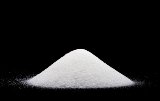Carbohydrates Definition
Understanding the carbohydrates definition helps you select healthier carbs.
Healthier carbohydrates can help you lose weight.
Carbohydrates,
as defined by Saint Joseph’s Health Library, are one of the three main
classes of food and a source of energy.
The other 2 main
sources are fats and protein.
However, carbs for some people
on a low carb diet is more like a bad 13 letter word.
Although counting carbs for weight loss is not a bad thing, you don’t
want to eliminate them all together.
In fact according to many medical experts, 60% of your total calories
should come from carbohydrates. You just need to choose the
right type of carbs for weight loss and to eat healthy.
Carbs are critical for our body and to ensure we have the right
nutrients. They fuel our brain and muscles and provide the
main source of energy for our body.
Where do Carbs Come From?
Carbohydrates are composed of glucose molecules and come in two types; simple and complex carbs.Simple Carbohydrates Definition
Simple carbohydrates are a quick source of energy and are quickly broken down in the body. Simple carbs are smaller molecules of sugar like glucose, fructose, maltose, sucrose and lactose.
All of these with the exception of lactose come from plants. Lactose is found in milk. These carbs are rapidly absorb by the body and increases the chance of these sugars being stored as fat.
 Refined
carbs are generally very high in simple
sugar.
Refined
carbs are generally very high in simple
sugar. Foods like cake, pastry, chocolate, regular flavored soda and table sugar are all examples of foods with refined carbs.
If you consume a more carbs that is needed at that given time for energy the remainder is stored in your liver or converted to fat for future fuel if needed.
So consuming too much of these simple carbs can result in excess body fat. Some simple carbs can raise blood sugar levels very quickly. For people with diabetes this can be a dangerous situation.
Complex Carbohydrates Definition
Complex carbohydrates generally take longer for the body to digest and are made up of several chains of glucose molecules. Complex carbs are the better choice and not only supply energy but often contain fiber and other nutrients you need.
 Complex carbs can be found in whole
grain foods like oatmeal,
whole wheat breads and pastas and whole wheat cereals.
Complex carbs can be found in whole
grain foods like oatmeal,
whole wheat breads and pastas and whole wheat cereals. Other foods that are complex carb foods include vegetables, beans, legumes and potatoes. Complex carbs are starchy foods that come from plants.
Although white bread, rice and pastas are a form of complex carbs, it’s always better to select whole wheat versus these processed foods.
Carbrohydrates Definition-GI Index
Carbohydrates definition and the Glycemic Index (GI) go hand in hand. If you are trying to eat "smart carbs", then low GI foods are what you want.The Glycemic Index, or GI, is a way to measure and evaluate the rate at which carbohydrates breakdown in a person’s body and the effect these foods have on blood sugar levels.
Many diabetics watch the GI rating of foods to ensure they maintain a healthy blood sugar level. Carbs that are broken down quickly have a high GI and the blood glucose curve is high.
Carbohydrates that are slower to digest have a lower GI and the blood glucose curve is low.
The GI Index Range is:
- 55
or less = Low GI
- 56
– 69 = Moderate GI
- 70
or higher = High GI
Selecting Low GI Foods
Now that you have a better understanding of the carbohydrates definition and glycemic index, selecting the right foods is easier. Here are some great choices to help you reach your weight loss goals.Veggies
Vegetables are all generally considered low glycemic index foods.
However potatoes, corn, beets and carrots are a bit higher. Although still very healthy for you, if you want to focus on low GI foods, then limit these particular veggies.
Fruits
Some fruits can be high in carbs but still offer you lots of vitamins and other nutrients. However, if searching for low GI fruits, then avoid watermelon (high GI), mangoes, apricots, fruit cocktail, raisins and pineapple (medium GI).
As for fruit drinks, apple juice, grapefruit juice and orange juice are all low GI drinks. Here is a link where you can search their database to find the GI value for your favorite carbohydrate foods.
Dairy
Choose unsweetened dairy products like plain yogurt versus fruit flavored yogurts. In order to reduce your fat intake as well, select skim milk or low fat milk.
Breads and pastas
Select whole grain versions of these foods instead of foods processed with white flour. Whole grain foods are lower GI foods and also offer more dietary fiber and other nutrients you need.
Good Carbs Versus Bad Carbs
People are always talking about the good versus the bad when it comes to carbohydrates. While talking about it is easy, knowing the difference may not be as easy.Here is a graph that helps you recognize and understand about the good carbs and bad carbs.
In addition to this article on carbohydrates definition, be sure to understand the definition of calories.
Additional Articles
Low
Carb Diet
If you are thinking of trying a low carb diet, check out these reviews. These weight loss programs are some of the more famous low carbohydrate diets.
Free
Downloadable Weight Loss Chart
Use this spreadsheet to track your weight loss. You can track the calories from the foods you eat and the calories you burn from workouts. Plus there are charts so you can see the progress you are making.
Weight Loss Tools
Check out all the tools on this site to help you lose weight. You will find online calculators, downloadable files and more.
